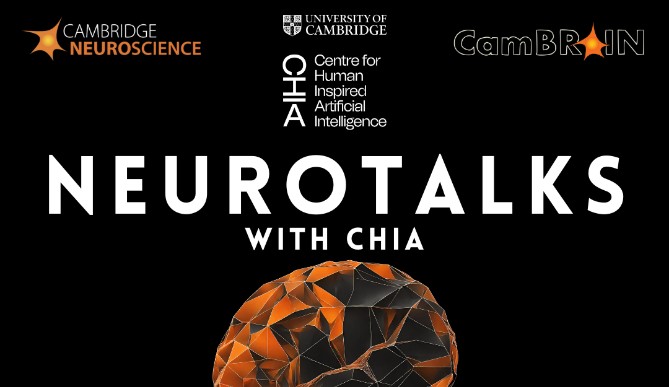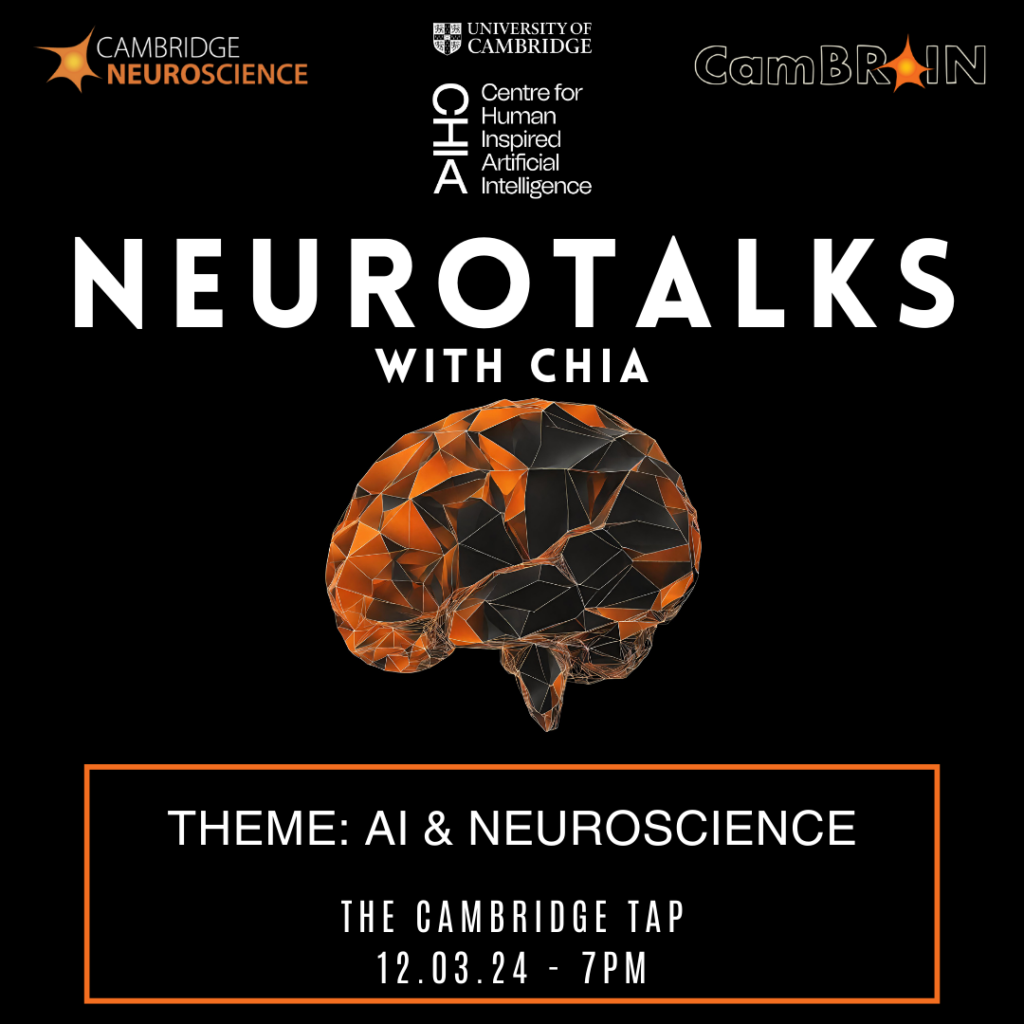
For those of you who haven’t been to Neurotalks before: each month we meet in the Cambridge Tap (private room with bar, upstairs) and enjoy talks from fellow early careers colleagues in neuroscience over a burger and a pint. These talks are meant for a general neuroscience audience, anyone from undergrad up to PI, (i.e. not the heavy nitty gritty academic stuff of lab meeting or conference talks) and they are interactive – you can shout out your weirdest questions at any time!
Looking forward to seeing you all then – 12 March, from 7pm (though get there early if you want a good seat!).
What makes the human brain special, and does it tell us anything about AI?
Humans are very clever, and that’s got something to do with how our brains process information. I will bring together pieces of a broader puzzle – from different species, and different branches of neuroscience – to zoom in on what sets the human brain apart from other primates, how this process can go wrong, and what lessons we can draw about how (not) to build intelligent systems.
Distributed computations in brains and machines
MRC CBU
The brain achieves its computational power, flexibility and efficiency through processing information in a parallel and distributed fashion. For this to work, information needs to continuously be spread, integrated, and partially synchronised in the brain’s distributed circuitry. An analogous process of parallel distributed processing also dominates modern artificial intelligence, where large scale neural networks are run in a distributed way across silicon chips. In this talk I will show how we have successfully used high resolution recordings in primates and theoretical models to uncover new principles guiding distributed processing in the brain and how these principles guide a path towards better distribution of computations in artificial computing systems.
Multi-area neural networks for adaptive motor control
Computational and Biological Learning Lab, Department of Engineering
The field of motor neuroscience has traditionally focused on the optimization of a single, simple task in a static environment. However, advances in artificial intelligence have stimulated interest—or rather, the necessity—to go beyond that classical paradigm. Humans exhibit a broad spectrum of motor behaviours across various tasks, ranging from orchestrating sophisticated fine movements, such as handwriting, to rapid adaptation when lifting an empty milk carton believed to be full. In this talk, I will present an approach that aims to explore the neural circuit basis of such flexibility of motor skills by considering a wider range of brain areas and the hierarchical structures between them, bridging the gap between simplistic models and the nuanced capabilities of human cognition.

Posted on 07/03/2024